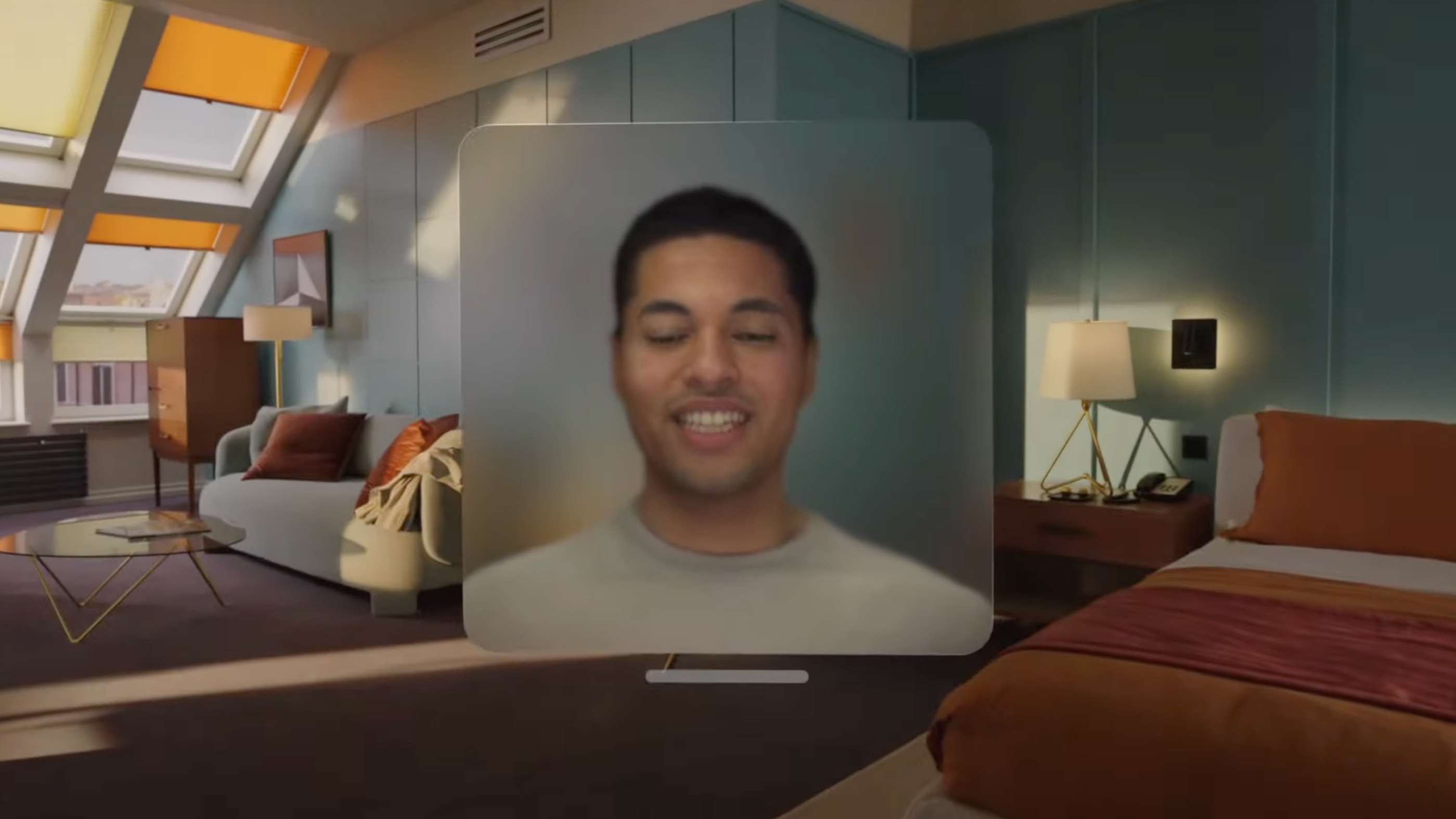If you FaceTime me with Apple's new Vision Pro headset, I'll end our friendship
Don't call me

Apple’s WWDC 2023 gave us some very exciting stuff – and chief among it all was the Apple Vision Pro, an extremely fancy AR headset that will cost you more than 10 thousand Chicken McNuggets (a vital metric I use for ascertaining the tangible value of many things in my life).
There are some pretty cool features on show here, sure – the 3D cameras are nifty, and I like that it has a dedicated subsystem for analyzing your physical surroundings to maximize spatial audio performance. But I’ll tell you what I didn’t like at all: that absolutely haunting FaceTime demonstration.
In case you missed Apple’s livestream (you can check out our WWDC 2023 recap here), I’ll sum up: since you’re wearing the headset and its on-board cameras face outward, FaceTime obviously won’t work as it normally does. But your video call partners will still be able to ‘see’ you, thanks to a new feature that leverages AI to create a 3D recreation of your noggin and animates it in real-time.
Face/Off
I don’t want to gloss over dreadfully, mundanely dystopian this is. I think FaceTime is great, to be clear: video calls ushered in a new era of long-distance intimacy in our society, taking us a step beyond phone calls and giving us the ability to look into the eyes of our loved ones (or, you know, professional colleagues) no matter the physical space between us – and Apple played a big part in popularizing it when FaceTime arrived on our iPhones.
This isn’t that. Want to actually see your friend during a call? Tough luck, you’re getting this cursed avatar instead. The Vision Pro will require you to scan your face using the exterior 3D cams before you get started, from which it’ll not just build your digital twin, but apparently also mirror your facial mannerisms as best it can based on its on-board sensors.

Apple made no secret of the fact that getting FaceTime to work on the Vision Pro was a massive technical challenge, and I'm not disputing that the solution is technologically impressive. But I have to ask: was it even necessary?
After all, the headset is designed to work seamlessly with an iPhone or MacBook anyway, and I’ll eat my hat if a single person who buys one of these damn things doesn’t already own a device with a regular front-facing camera. Quite frankly, I don’t want to put on a headset just to chat with my mom about how her paddleboarding is going. There’s a certain Jeff Goldblum line from Jurassic Park that comes to mind. If you know, you know.
Sign up for breaking news, reviews, opinion, top tech deals, and more.
Deepfake it til you make it
Even setting aside how much I hate this purely on principle, the livestream demonstration wasn’t even particularly impressive. The blinking and eye movements are unsettlingly robotic, and the technology to provide truly seamless, instantaneous lip-syncing simply isn’t there yet. It’s clearly not a real person; the whole thing gives off a very 'uncanny valley' vibe.

Oh, and let’s not forget about the data privacy implications of this. Apple is going to be scanning and saving your virtual likeness, and I’m concerned about the security of those biometrics. I don't particularly like the idea of saving my deepfake face on a very expensive device that would be a burglar's first pick.
I’ll be taking my 10 thousand McNuggets, thanks. FaceTime on the Vision Pro feels like the most distilled example of my main issue with Apple’s ‘groundbreaking’ headset: the fact that at the end of the day, I could do most of the stuff it does better and more easily just using my phone. If you call me and I see your AI face instead of your real one, then I’m sorry, but you’re off my contacts list.

Christian is TechRadar’s UK-based Computing Editor. He came to us from Maximum PC magazine, where he fell in love with computer hardware and building PCs. He was a regular fixture amongst our freelance review team before making the jump to TechRadar, and can usually be found drooling over the latest high-end graphics card or gaming laptop before looking at his bank account balance and crying.
Christian is a keen campaigner for LGBTQ+ rights and the owner of a charming rescue dog named Lucy, having adopted her after he beat cancer in 2021. She keeps him fit and healthy through a combination of face-licking and long walks, and only occasionally barks at him to demand treats when he’s trying to work from home.